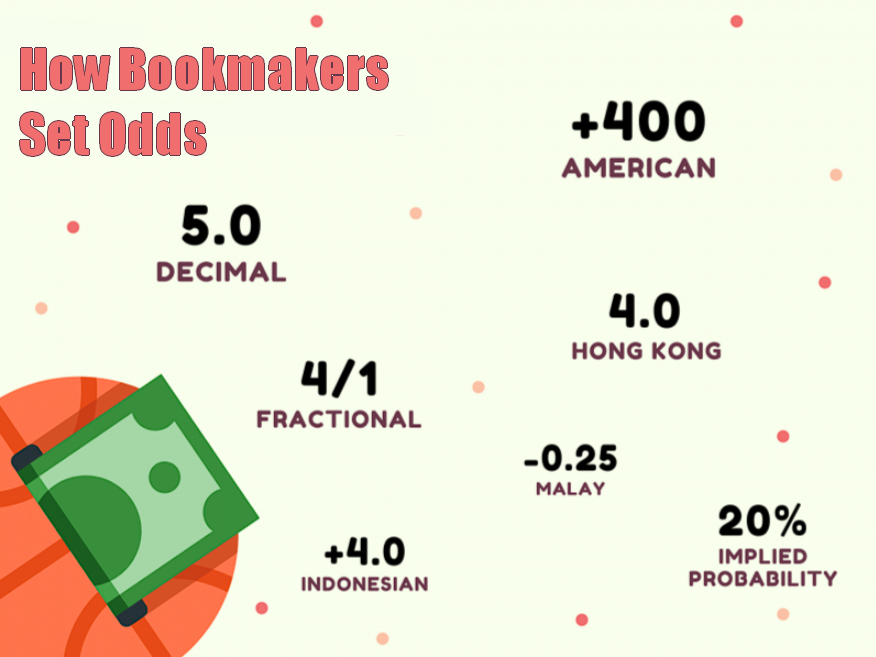In the world of sports betting, understanding how bookmakers set odds is crucial for bettors seeking to make informed decisions and maximize their chances of success. The process of setting odds involves a complex interplay of statistical analysis, market dynamics, and risk management strategies. This article explores the mechanisms behind how bookmakers set odds, providing insights into the factors that influence this process and how bettors can leverage this knowledge to enhance their betting experience.
The Role of Odds in Sports Betting
Odds are fundamental to sports betting, representing the probability of different outcomes and determining the potential payouts for winning bets. Bookmakers set odds to reflect the likelihood of various results while also incorporating a margin to ensure profitability.
- Probability Representation: Odds represent the implied probability of an event occurring, guiding bettors in their decision-making process.
- Payout Determination: Odds determine the payout for winning bets, influencing the value and risk associated with different betting options.
- Market Balance: Bookmakers set odds to balance their books, ensuring that the amount of money wagered on each outcome is proportionate, minimizing risk.
Factors Influencing Odds Setting
Several key factors influence how bookmakers set odds, reflecting the complex nature of the betting market and the need to manage risk effectively.
- Statistical Analysis:
- Bookmakers employ statistical models and algorithms to analyze historical data, team performance, player statistics, and other relevant factors.
- This analysis helps in assessing the probability of different outcomes and setting accurate odds.
- Market Dynamics:
- The betting market is dynamic, with odds fluctuating based on the volume and distribution of bets placed by bettors.
- Bookmakers adjust odds in response to market trends, ensuring that their books remain balanced and profitable.
- Risk Management:
- Bookmakers incorporate a margin into their odds to manage risk and ensure profitability.
- This margin, often referred to as the “vigorish” or “vig,” represents the bookmaker’s commission and varies depending on the sport and market.
The Impact of Market Dynamics
- Supply and Demand: The volume of bets placed on different outcomes influences odds, with higher demand for a particular outcome leading to shorter odds.
- Public Perception: Public sentiment and betting trends can impact odds, with bookmakers adjusting their lines to reflect the perceived value of different outcomes.
- Market Efficiency: Efficient markets, where information is widely available and bettors are well-informed, tend to have more accurate and stable odds.

The Process of Setting Odds
Setting odds involves a multi-step process that combines statistical analysis, market observation, and risk management strategies.
- Initial Odds Calculation:
- Bookmakers use statistical models and algorithms to calculate initial odds based on historical data and other relevant factors.
- These initial odds reflect the implied probability of different outcomes and serve as a starting point for further adjustments.
- Market Observation:
- Bookmakers monitor the betting market, observing the volume and distribution of bets placed on different outcomes.
- This observation helps in identifying market trends and adjusting odds to balance the book and manage risk.
- Odds Adjustment:
- Based on market dynamics and risk management strategies, bookmakers adjust odds to ensure profitability and balance.
- These adjustments can occur in real-time, reflecting the latest market trends and betting activity.
Strategies for Managing Risk
- Balancing the Book: Bookmakers aim to balance the amount of money wagered on each outcome, minimizing risk and ensuring profitability.
- Hedging Bets: In some cases, bookmakers may hedge their bets by placing wagers with other bookmakers to manage risk and exposure.
- Limiting Exposure: Bookmakers may limit the amount of money that can be wagered on certain outcomes to manage risk and exposure.
The Role of Technology in Odds Setting
Technology plays a crucial role in the process of setting odds, enabling bookmakers to analyze data, monitor market trends, and adjust odds in real-time.
- Data Analytics:
- Advanced data analytics tools allow bookmakers to process and analyze vast amounts of data, identifying trends and patterns that inform odds setting.
- These tools enhance the accuracy and efficiency of odds calculation, reflecting the latest market dynamics and betting activity.
- Machine Learning:
- Machine learning algorithms can predict market trends and betting behavior, enabling bookmakers to set more accurate and competitive odds.
- These algorithms adapt to new data and market conditions, continuously improving the odds-setting process.
Benefits of Technology in Odds Setting
- Enhanced Accuracy: Technology enhances the accuracy of odds calculation, reflecting the latest market dynamics and betting activity.
- Real-Time Adjustments: Advanced tools enable bookmakers to adjust odds in real-time, responding to market trends and betting behavior.
- Competitive Advantage: Leveraging technology allows bookmakers to offer more competitive odds, attracting and retaining bettors.
Conclusion
Understanding how bookmakers set odds is essential for bettors seeking to make informed decisions and maximize their chances of success. By recognizing the factors that influence odds setting and the role of technology in this process, bettors can gain insights into market dynamics and develop effective betting strategies. Staying informed about the mechanisms behind odds setting and leveraging this knowledge can significantly enhance the overall betting experience and contribute to long-term success in the competitive world of sports betting.



